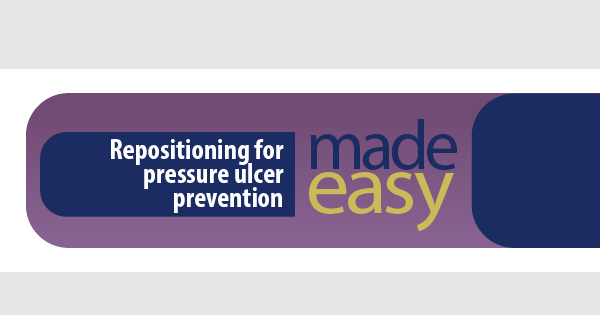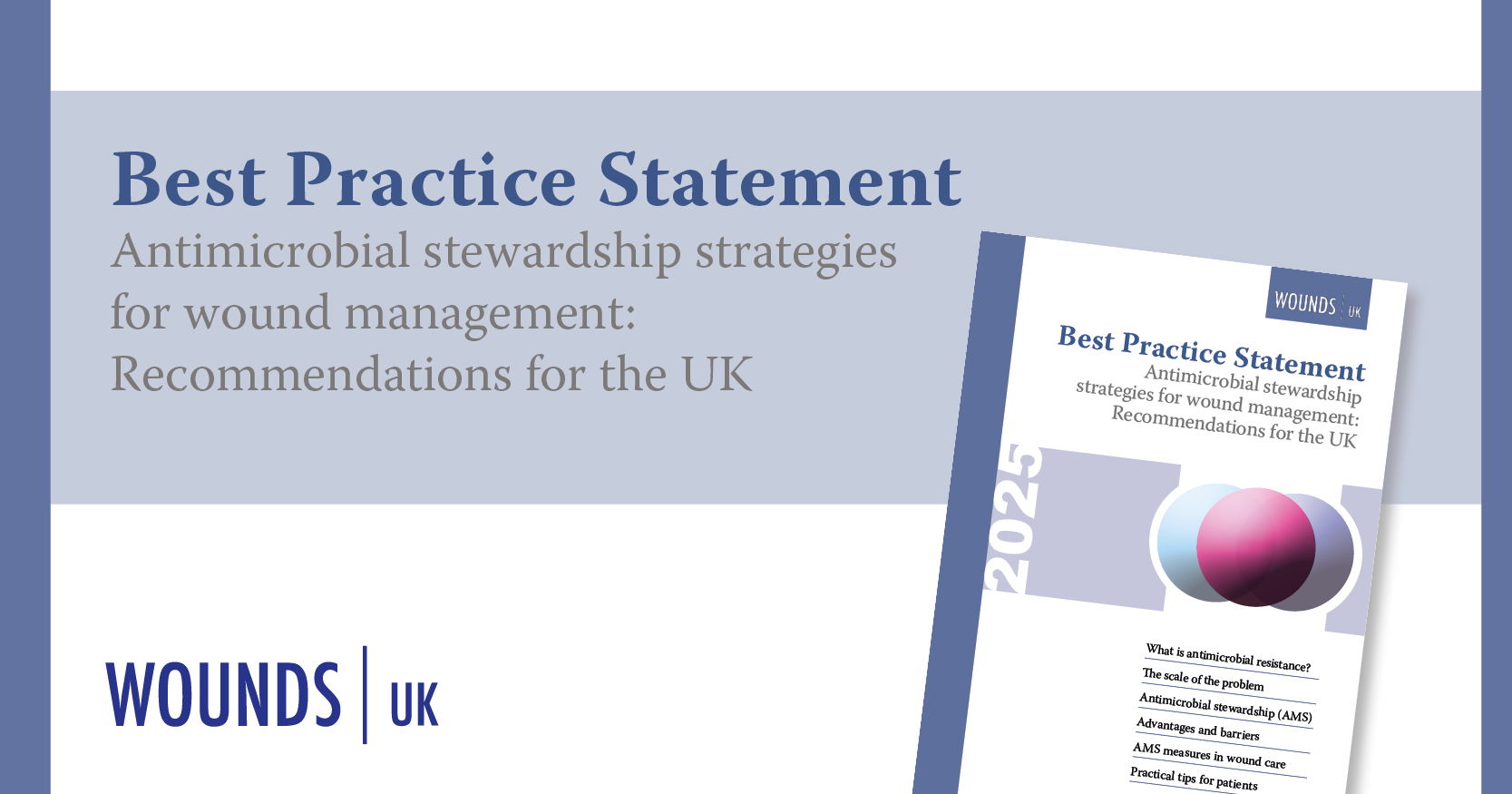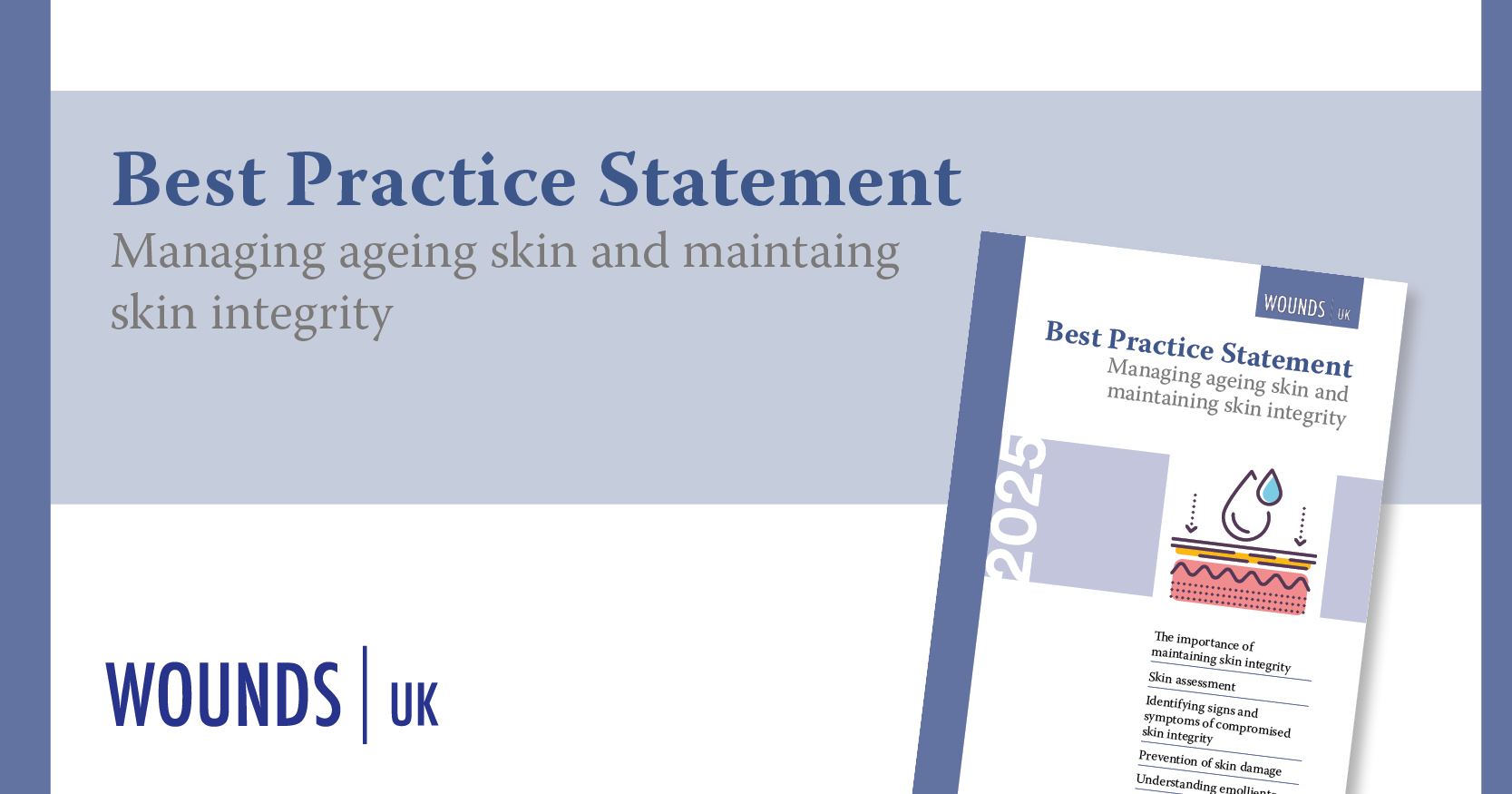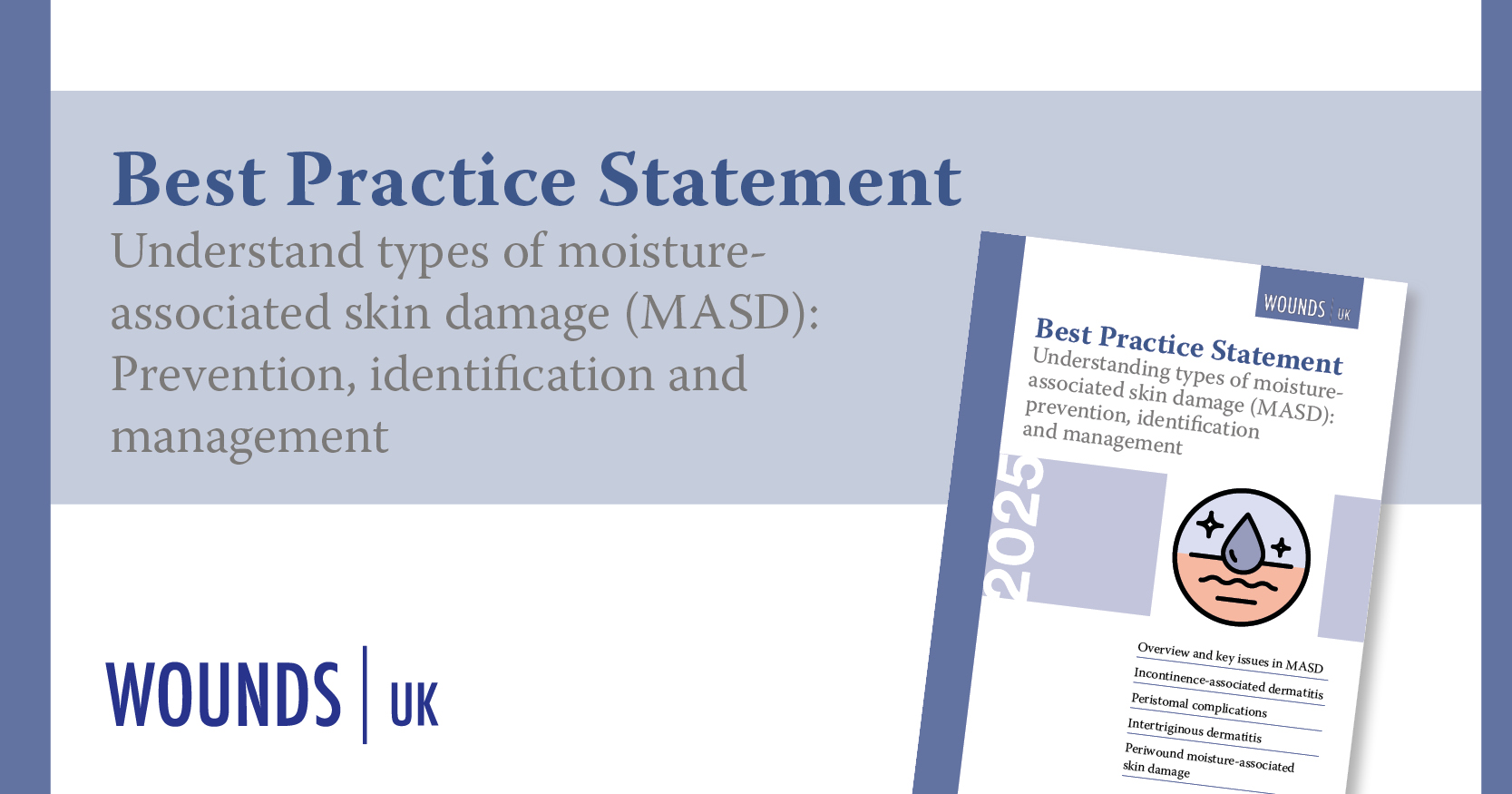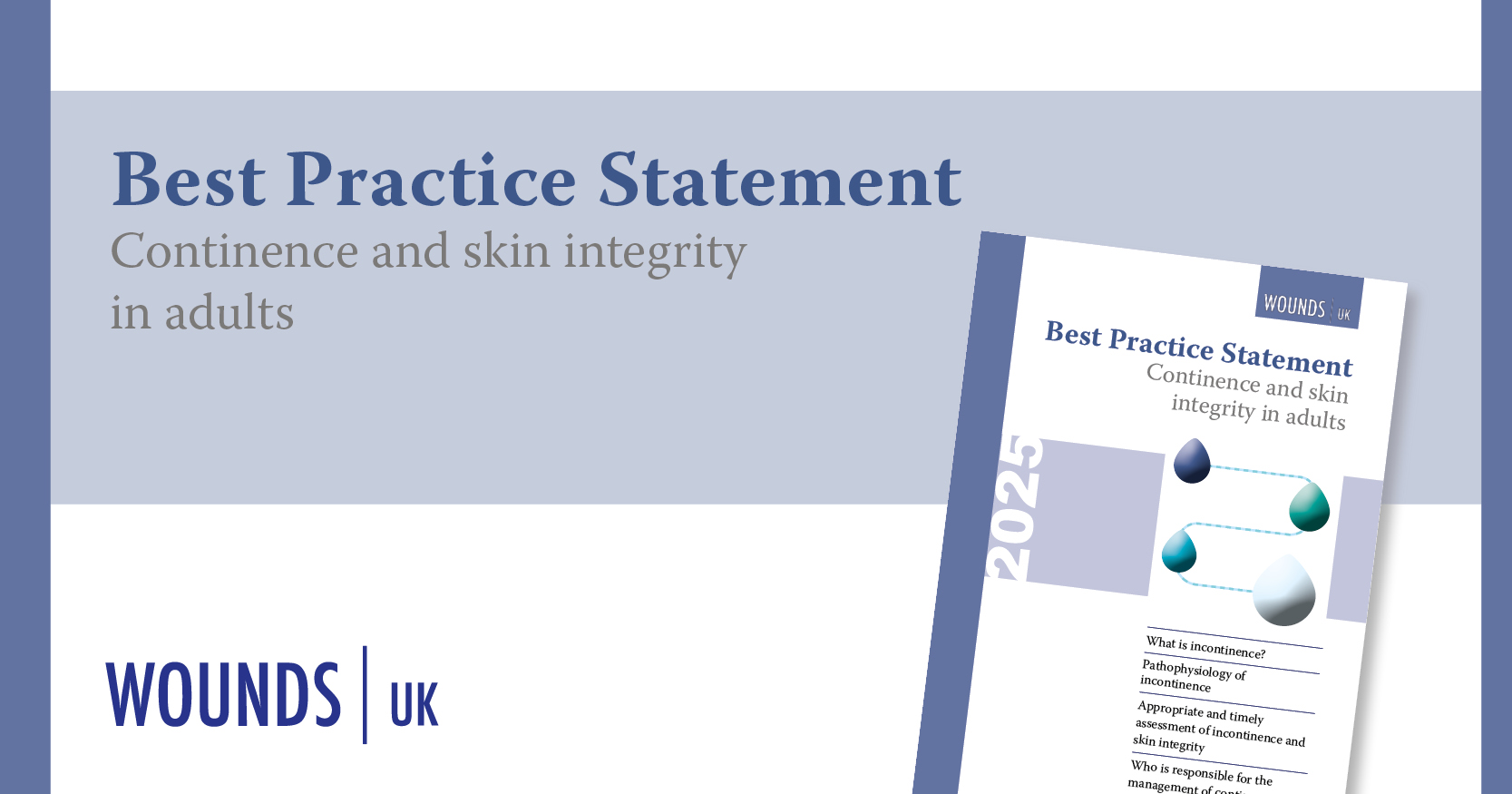Repositioning for pressure ulcer prevention
Pressure ulcers are localised areas of damage to the skin and/or underlying tissue, which usually occur over bony prominences. They result from intense and/or prolonged exposure to pressure, tension or shear, or a combination of these forces, causing deformation of tissue, cells and vasculature. This deformation impacts on the capillary network, supply of nutrients to the tissue and lymphatic fluid drainage, compromising the clearance of metabolic waste products, all of which can result in cell and tissue damage (EPUAP/NPIAP/PPPIA, 2019).
Several contributing factors may increase pressure ulcer risk, including:
- Reduced mobility or inactivity
- Skin/pressure ulcer status
- Inadequately perfused tissue (e.g. in people with diabetes)
- Certain haematological measures
- Skin moisture
- Increasing age
- Nutrition
- General health status (Coleman et al, 2013).
Pressure ulcers are both costly to healthcare systems and affect patients’ lives due to increased pain, lengthened hospital stays and decreased quality of life (Wood et al, 2019).
Repositioning is recommended in clinical guidelines as a priority for those individuals with or at risk of pressure ulcers with the aim to provide optimal offloading of bony prominences and redistribution of pressure (NICE, 2014; EPUAP/NPIAP/PPPIA, 2019), as shown in Figure 1.
Multidisciplinary responsibility
Since ‘every contact counts’, all health and social care practitioners involved in a patient’s care have a role to play in preventing pressure damage. Rather than only being a nursing responsibility, this could mean, for example (Fletcher, 2023b):
- Physiotherapists supporting patients to be active and mobile
- Paramedics engaging in risk assessment in the home when they first meet the patient.
Pressure ulcers are in the top 10 harms in the NHS (Fletcher, 2022) and research suggests that lack of standardised staff education is a key factor in why patients continue to develop pressure ulcers in healthcare settings (Greenwood and McGinnis, 2016).
Therefore, all members of multidisciplinary teams should be responsible and accountable for understanding their role in the pressure ulcer prevention process – and for keeping their knowledge and skills around repositioning up to date.
Repositioning in clinical practice
Individuals at high risk of pressure ulcer development should be supported to understand what can cause pressure ulcers, how to prevent them, early signs to look out for and how to use any equipment needed to change position (NICE, 2019).
Adults capable of self-care should be supported with repositioning themselves. Those unable should be offered assistance, using appropriate equipment (e.g. turning mattresses, lateral tilt beds or a fluid immersion simulation system) with the most appropriate surface if needed (NICE, 2014). Where possible, involve the individual and/or family/carers when discussing and establishing reposition frequency.
The equipment should help to improve adherence to care, provide comfort, enable earlier mobilisation, and meet the varying needs of a diverse population, as well as contribute to (Fletcher, 2023a):
- Maintaining or improving patient independence
- Good infection prevention protocols
- Supporting good moving and handling practices
- Meeting patient safety requirements
- Conforming to sustainability and net zero targets
- Being financially sound.
Choice of repositioning regimen
Repositioning regimens vary in terms of (Gillespie et al, 2020):
- Frequency, e.g. 2-, 4-, or 6-hourly turning
- Tilt positioning, e.g. 30°, 45° and 90°, and/or
- Body position, e.g. using tilt and/or lateral, supine, or prone position.
Comparative effectiveness of different repositioning frequencies and positions are uncertain (Gillespie et al, 2020). Studies exploring the effects of repositioning regimens on pressure ulcer incidence in aged care, acute care, and critical care report conflicting findings (EPUAP/NPIAP/PPPIA, 2019).
Individualised approach to repositioning
The EPUAP/NPIAP/PPPIA (2019) guideline recommends that individuals with or who are at risk of pressure ulcers are repositioned on an individualised schedule unless this is contraindicated. Determining an optimal repositioning schedule requires considering each person’s physical, cognitive, and psychological needs, as well as which support surface is in use. The aim being to provide maximum redistribution of pressure and optimal offloading of bony prominences, taking into account the following factors:
- Level of immobility and inactivity
- Need to influence microclimate control and shear reduction
- Size and weight of the individual
- Number, severity and location of existing pressure ulcers
- Risk for developing new pressure ulcers.
The most objective way to determine individual repositioning frequency may be to check the person’s skin when they are repositioned.
A thorough skin assessment should take into consideration differing skin tones. Erythema (redness) is a well-known indicator when checking for signs of skin/pressure damage; however, this can be difficult to detect in a range of skin tones, so changes in texture, temperature and colour compared to the surrounding skin are just some of the questions to consider (Wounds UK, 2021; see Box 1). The outcome of ongoing skin assessments will form part of the holistic patient assessment, considering the patient’s clinical conditions (such as end of life and cardiac instability), including overall treatment objectives and adjusting repositioning frequency accordingly.
It is important to ensure a balance between adhering to turning schedules and patient comfort; for example, lower frequency of turning at night compared with daytime may be needed for some patients, but not all (Fletcher, 2017). Although not always possible, care should be taken not to position an individual on an existing pressure ulcer (EPUAP/NPIAP/PPPIA, 2019). Pain is also a key factor to consider as this can influence the individuals experience when being repositioned. Ensuring the correct selection of support surface is key as part of the holistic patient assessment.
The 30° tilt position
International guidelines also recommend the use of the 30° side lying position in preference to the 90° side lying position (EPUAP/NPIAP/PPPIA 2019). The position is achieved by rolling the patient to a slightly tilted 30° position, using offloading devices where necessary (Moore et al, 2011), see Figure 2.
Equipment to support safe repositioning
There is a growing body of evidence to support use of assistive equipment for healthcare professionals when performing patient-handling tasks, like repositioning. The data show benefits for caregivers in using hoists, air-assisted devices, and friction-reducing devices for lateral transfers and repositioning (Fray and Davis, 2023), such as the use of lateral tilt beds or surfaces.
Selection of appropriate equipment for an individual is complex and involves many factors including: treatment or prevention aims for skin integrity; comfort, acceptability, and mobility requirements for the patient and the resources available to an organisation. Results from two randomised controlled trials (RCTs; Nixon et al, 2019; Beeckman et al, 2019) indicated that for high-risk patient populations there was a lower incidence or no difference in incidence of pressure ulcers for patients using continuous low pressure (CLP) versus alternating low pressure (ALP) surfaces.
The RCTs differed on opinions of cost effectiveness. Nixon et al (2019) highlighted that patient preference including movement ability and rehabilitation needs must be a consideration.
Complex clinical situations
Careful repositioning consideration should be given to individuals with multiple, complex care needs such as those in critical care, in surgery and those receiving end of life (EOL) care. Recommendations for critical care patients is for slow gradual turns and small frequent shifts in body position to allow stabilisation of oxygenation and haemodynamic status. Ongoing assessment is required to assess an individuals tolerence to increased movement (EPUAP/NPIAP/PPPIA, 2019).
Surgical patients may not be able to be repositioned during surgery and post-operatively. Adopting different pre- and post-operative positions from those used during surgery is recommended (EPUAP/NPIAP/PPPIA, 2019).
Patients receiving palliative or EOL care are at high risk of developing pressure ulcers (Samuriwo et al, 2020). Repositioning frequency should be considered as part of ongoing symptom management, with shared decision making wherever possible (Leadership Alliance for the Care of Dying People, 2014).
In all complex clinical situations, in addition to an appropriate support surface that will provide maximum pressure redistribution and optimal offloading (e.g. fluid immersion or air fluidised), consideration should also be given to the use of a bed with a lateral tilt function to achieve accurate, small shifts in body position.
Conclusions
Pressure ulcers are costly to healthcare systems and detrimental to patients’ lives (Wood et al, 2019). Effective repositioning [Box 2] is critical to prevention and prevention of pressure ulcers is everyone’s responsibility. As the Patient Safety Incident Report Framework (PSIRF; NHS England, 2022) moves the focus from individual incidents to focus on system wide quality improvement, it must be recognised that we are all accountable.

